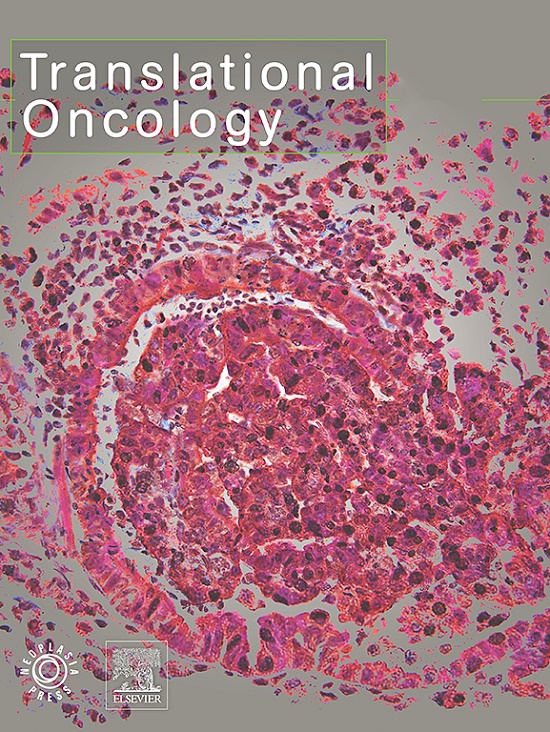非小细胞肺癌肿瘤微环境中浸润免疫细胞的空间异质性。
IF 5
2区 医学
Q2 Medicine
引用次数: 0
摘要
肿瘤浸润淋巴细胞(TILs)是非小细胞肺癌(NSCLC)肿瘤微环境(TME)的重要组成部分。然而,由于其异质性,很难对其进行描述。本研究分析了非小细胞肺癌患者的五种细胞标记物。我们使用 Efficientnet-B3 对肿瘤细胞(TCs)和 TILs 进行了分割,并探索了它们的定量信息和空间分布。然后,我们通过重叠连续的单色原 IHC 切片来模拟多重免疫组化(mIHC)。结果显示,程序性细胞死亡配体 1(PD-L1)阳性 TC 的比例和密度在核心区最高。CD8+T细胞距离肿瘤最近(中位距离:41.71 μm),而PD-1+T细胞距离肿瘤最远(中位距离:62.2 μm),我们的研究发现,大多数淋巴细胞聚集在瘤周10-30 μm的范围内,可与TC发生交叉对话。我们还发现,通过 CD8+ T 细胞密度可对 TME 进行分类,而 CD8+ T 细胞密度与患者的预后相关。此外,我们还在 CD4 染色 IHC 切片的基础上实现了单一色原 IHC 切片的重叠。我们探索了 NSCLC 患者异质性 TME 中细胞的数量和空间分布,并实现了 TME 分类。我们还找到了一种经济地显示多种分子共同表达的方法。本文章由计算机程序翻译,如有差异,请以英文原文为准。
Spatial heterogeneity of infiltrating immune cells in the tumor microenvironment of non-small cell lung cancer
Tumor-infiltrating lymphocytes (TILs) are essential components of the tumor microenvironment (TME) of non-small cell lung cancer (NSCLC). Still, it is difficult to describe due to their heterogeneity. In this study, five cell markers from NSCLC patients were analyzed. We segmented tumor cells (TCs) and TILs using Efficientnet-B3 and explored their quantitative information and spatial distribution. After that, we simulated multiplex immunohistochemistry (mIHC) by overlapping continuous single chromogenic IHCs slices. As a result, the proportion and the density of programmed cell death-ligand 1 (PD-L1)-positive TCs were the highest in the core. CD8+ T cells were the closest to the tumor (median distance: 41.71 μm), while PD-1+T cells were the most distant (median distance: 62.2μm), and our study found that most lymphocytes clustered together within the peritumoral range of 10-30 μm where cross-talk with TCs could be achieved. We also found that the classification of TME could be achieved using CD8+ T-cell density, which is correlated with the prognosis of patients. In addition, we achieved single chromogenic IHC slices overlap based on CD4-stained IHC slices. We explored the number and spatial distribution of cells in heterogeneous TME of NSCLC patients and achieved TME classification. We also found a way to show the co-expression of multiple molecules economically.
求助全文
通过发布文献求助,成功后即可免费获取论文全文。
去求助
来源期刊

Translational Oncology
ONCOLOGY-
CiteScore
8.40
自引率
2.00%
发文量
314
审稿时长
54 days
期刊介绍:
Translational Oncology publishes the results of novel research investigations which bridge the laboratory and clinical settings including risk assessment, cellular and molecular characterization, prevention, detection, diagnosis and treatment of human cancers with the overall goal of improving the clinical care of oncology patients. Translational Oncology will publish laboratory studies of novel therapeutic interventions as well as clinical trials which evaluate new treatment paradigms for cancer. Peer reviewed manuscript types include Original Reports, Reviews and Editorials.
 求助内容:
求助内容: 应助结果提醒方式:
应助结果提醒方式:


